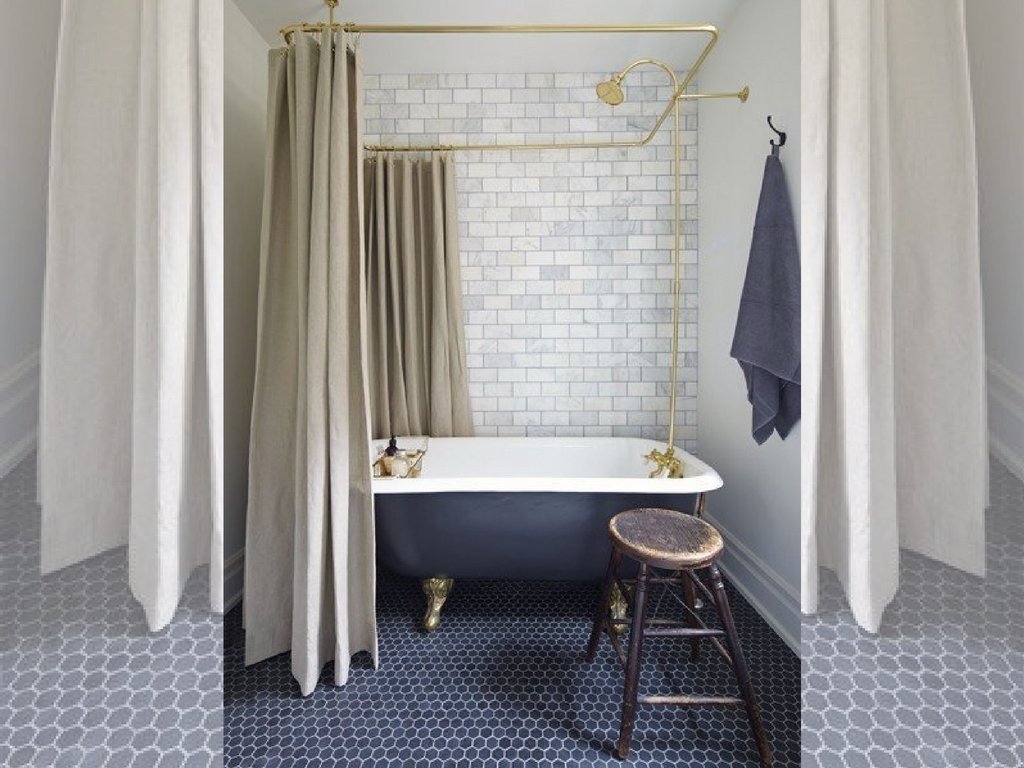The charm and sophistication of a clawfoot bathtub can quickly diminish if it shows signs of wear and tear. To preserve the unique and beautiful appearance that this vintage piece brings to your bathroom, it’s essential to update and refinish it, breathing new life into the space.
Clawfoot bathtub refinishing is a method used to return cast iron tubs to their original appearance and beauty. The refinished claw foot tubs, pedestal sinks, and antique lavatory look completely restored and repaired. This refinishing method makes porcelain glower and as good as new. Clawfoot tubs are always the centre and main thing in a bathroom that is of concern during remodelling. Unlike acrylics and acrastone, the tub cleaning using refinishing method is important since the clawfoot tub is a quality antique.
Restoring your clawfoot bathtub to its former glory can be a rewarding DIY project, and once accomplished, you’ll feel a sense of pride and satisfaction. However, if you’re not up for the challenge, hiring a contractor might be the best option for you.
Refinishing clawfoot bathtub does not have a specification on what colour the method applies and works for. Clawfoot bathtubs exist in several colours such as white, almond, bone, and candy apple all of which can be restored. Most of the bathtub designs are known to have a rough back that is made of cast iron. When repairing and restoring the tub, the outer cast iron requires to be scrubbed using sandpaper to get rid of the exterior colour coating, rust, and corrosion. The results always give the outer part a glossy and smooth finish and it can afterward be painted and covered in a colour.it is also advisable to have the exterior finishing treated with either gold, bronze, or nickel. Finally, the tub’s faucets, drains, handles and overflow covers can be replaced in case they also have repairing issues.

A clawfoot tub’s feet is the most challenging part to match and fix in case of damages. The feet requirements for each type of clawfoot tub are different and unique hence need to be matched carefully. The feet can be locally prepared by the owner and some may even need the help of an expert to fix. The feet are important since they provide the chance to fix the tub to the drainage system by lifting it higher are required by plumbing. it is therefore key that the tub is elevated at the end of its restoration to be functional.
Steps followed when refinishing the tub are.
First the plumbing parts such as drains, faucets, and overflows are disconnected from the bathtub itself. Most people prefer to replace these parts with new ones at the end of the restoration process. This ensures that the drainage system experiences no leakages. The next one needs to prepare the work area by spreading cover clothes in the area around and on items that need to be protected from damages from the process. Masking and sheer tapes may be used in the coverup to ensure parts like walls, electronics, vents, and mechanical property is well protected. The third step requires the use of sandpaper to scrub the outer parts of the tub. This process helps to get rid of paints and the outer layer of the tub to ensure that at the end of the repair session the tub will have a complete finish.

You may use fine-grit sandpaper or a mechanical sander to do this efficiently. Make sure to remove any existing finish and rough spots.
The next step involves the use of brushes to clean the areas that are not easily accessible such as crevices and plumbing holes, among others. The cleaning of such hidden parts can also be done using a stainless-steel wire brush to be able to get rid of all the dirt and debris in these places. The tub is then cleaning with soap water, but a person should ensure that it no longer has remaining dirt or dust so that the painting process can be effective. This can be done using a clean piece of cloth. The next procedure that follows is sealing the inner part of the tub with some plastic sheets. The exterior of the tub is then sprayed with rusty metal primer to prevent the further formation and spread of rust on the outer parts with the time of usage. A first coating of the primer should be spayed, the exterior left to dry, then spay the next primer coating. The outer parts may all need to be coated with primer including under the tub and the feet.
Make sure to choose a high-quality epoxy primer. By following this step, you can achieve a flawless finish, as it will enhance the paint’s adhesion to the surface.
The tub exterior can then be painted using spray paint or any other preferred paint type. The painted tub is then left to sit and dry for some time. Spray paint may be the best type of paint to use since it fully covers every part evenly, however, brush painting gives the painting a thicker and more protective coating. The right fixtures for plumbing requirements can then be assembled and bought in case some are missing. The pieces should be exact for them to fit perfectly into the plumbing system. Finally, the tub can be reconnected, and curtains placed in readiness for use.
Remember to cure the paint well before using the tub. Curing takes hours and, in some cases, even days. You must be patient to achieve optimal results and not ruin this job you worked so hard for.
Conclusion
Restoring and refinishing this antique piece is not an easy task. But once you get your hands dirty and accomplish the job beautifully, you’ll see that the labour of love you poured in is worth all the effort.






